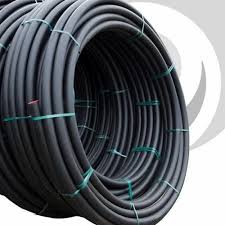Sep . 01, 2024 21:04 Back to list
High-Density Polyethylene (HDPE) Conduit Couplings - Durable and Reliable Solutions
Understanding HDPE Conduit Coupling Products
High-Density Polyethylene (HDPE) conduit coupling products play a critical role in various infrastructure projects across the globe. Known for their durability, resistance to environmental stress, and flexibility, HDPE materials are increasingly chosen for electrical and communication conduit systems. This article will explore the features, benefits, and applications of HDPE conduit coupling products, highlighting why they are becoming the material of choice in many industries.
What are HDPE Conduit Couplings?
HDPE conduit couplings are fittings used to connect lengths of HDPE conduit. These couplings allow for the seamless joining of sections to create a continuous pathway for electrical wiring, fiber optics, and other utilities. Designed for easy installation, HDPE couplings can be used in both underground and above-ground applications, offering versatility that makes them suitable for a wide range of settings.
Key Features
1. Durability HDPE is renowned for its high tensile strength and resistance to impact, making it ideal for rigorous industrial applications. The coupling products maintain their integrity even in challenging conditions.
2. Corrosion Resistance Unlike traditional metal couplings, HDPE does not corrode, rust, or degrade when exposed to moisture or chemicals. This characteristic significantly extends the lifespan of electrical systems and reduces maintenance costs.
3. Lightweight and Easy to Install HDPE couplings are lighter than their metal counterparts, making transport and installation easier. Installation can often be completed without heavy machinery, thereby saving time and resources on the job site.
hdpe conduit coupling products

4. Flexibility The flexibility of HDPE materials allows couplings to be easily maneuvered into place, accommodating bends and turns in conduit pathways without compromising the system's integrity.
5. Environmental Resistance HDPE is resistant to ultraviolet (UV) degradation, making it suitable for outdoor installations where exposure to sunlight is a concern. Additionally, its resistance to chemical leaching protects against ground contamination.
Applications
HDPE conduit coupling products are used in a variety of applications, including telecommunications, power distribution, and water management systems. They are critical components in fiber optic installations, providing a reliable pathway for sensitive cables. In electrical installations, HDPE conduits protect wiring from physical damage and environmental hazards.
In municipal applications, HDPE conduit systems facilitate the safe and efficient transport of utilities, helping cities manage electrical and communication networks effectively. Their adaptability makes them a favored choice among engineers and contractors who prioritize long-term performance.
Conclusion
In conclusion, HDPE conduit coupling products are an integral part of modern infrastructure, offering reliability and versatility across various applications. Their combination of durability, ease of installation, and resistance to environmental factors makes them an ideal choice for both commercial and residential projects. As we continue to advance technologically, the demand for HDPE products is set to grow, reinforcing their position as a backbone in utility management and communication systems worldwide. Whether you are a contractor, engineer, or planner, incorporating HDPE conduit couplings into your designs will ensure resilience and longevity for years to come.
-
High-Quality PVC Borehole Pipes Durable & Versatile Pipe Solutions
NewsJul.08,2025
-
High-Quality PVC Perforated Pipes for Efficient Drainage Leading Manufacturers & Factories
NewsJul.08,2025
-
High-Quality PVC Borehole Pipes Durable Pipe Solutions by Leading Manufacturer
NewsJul.08,2025
-
High-Quality PVC Borehole Pipes Reliable PVC Pipe Manufacturer Solutions
NewsJul.07,2025
-
High-Quality UPVC Drain Pipes Durable HDPE & Drain Pipe Solutions
NewsJul.07,2025
-
High-Quality Conduit Pipes & HDPE Conduit Fittings Manufacturer Reliable Factory Supply
NewsJul.06,2025

